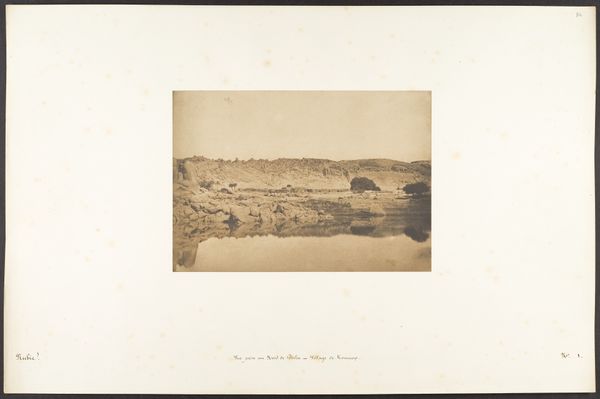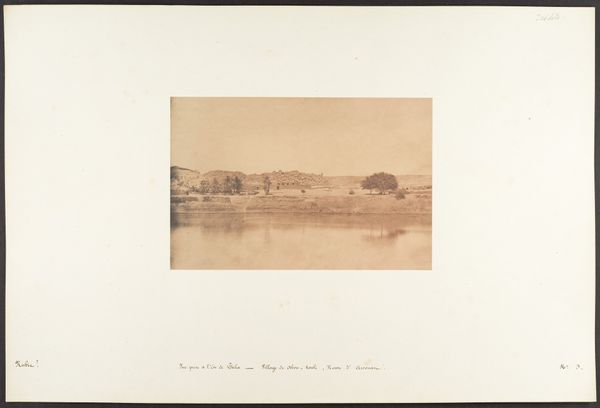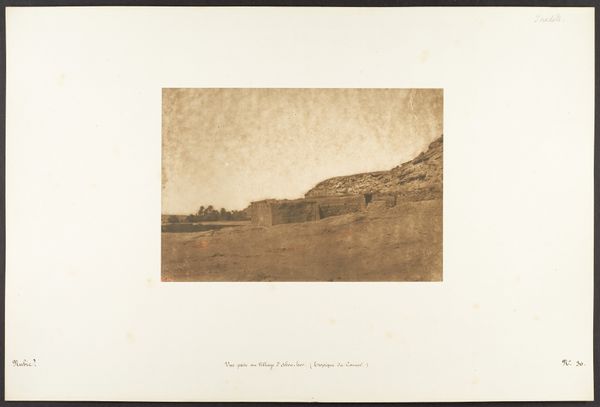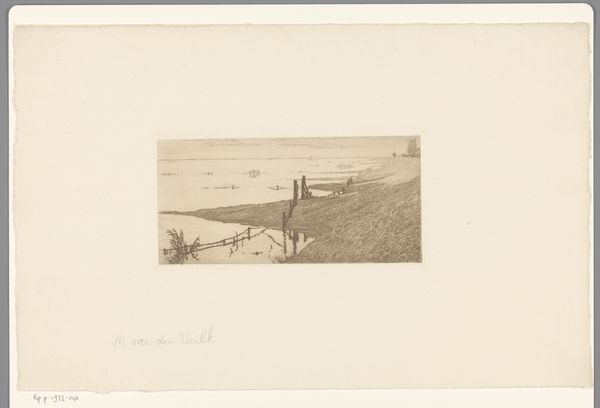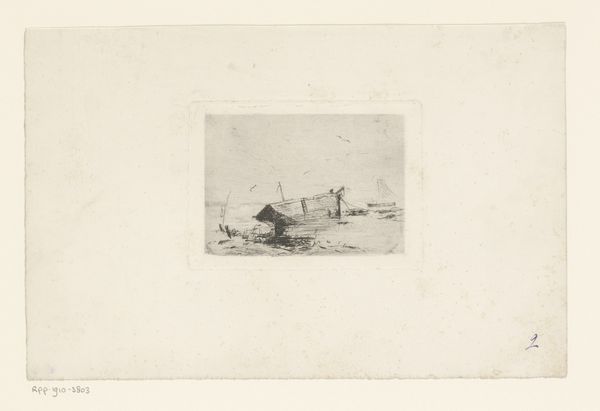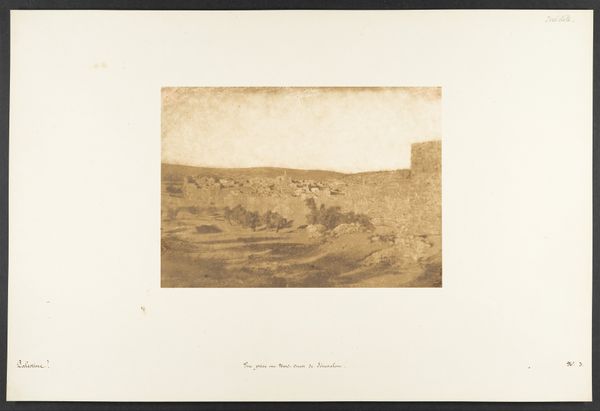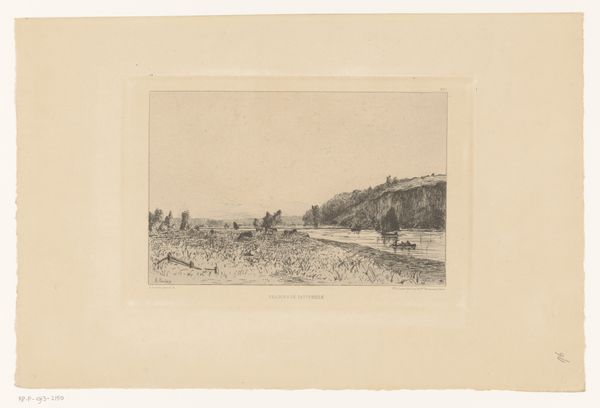
Gezicht op de Lagune van Venetië met dukdalf 1887 - 1903
0:00
0:00
carelnicolaasstormvansgravesande
Rijksmuseum
Dimensions: height 110 mm, width 160 mm
Copyright: Rijks Museum: Open Domain
Editor: So, this etching is titled "View of the Venetian Lagoon with Dolphins," created sometime between 1887 and 1903 by Carel Nicolaas Storm van 's-Gravesande. The print feels so subtle, almost ephemeral. I'm curious about what your reading of it is, what do you see in this piece, particularly considering its historical context? Curator: What immediately strikes me is the way this print participates in the visual culture of late 19th-century Venice. The city, by that point, was transitioning from a powerful independent state into a tourist destination, romanticized in countless images. Notice how Storm van 's-Gravesande focuses on atmosphere and mood, rather than architectural details or bustling activity. Editor: It does seem to prioritize atmosphere. Was that a common approach at the time? Curator: Absolutely. Consider the influence of artists like Whistler, who also depicted Venice in similarly ethereal terms. This aesthetic aligns with broader trends in Impressionism and Symbolism, but also serves to sanitize the city, removing any signs of social or economic disparity. It’s a very curated view of Venice for a specific audience. Do you think that knowing this changes how we interpret the dolphins? Editor: I think it does change the image, yeah. I didn't know there were dolphins...I thought those were pilings, or… something for mooring? Curator: Apologies! "Dukdalf" actually refers to those mooring posts you identified. The dolphins are… absent. Editor: Ah! That absence speaks volumes, right? What began as docks of great mercantile sea power become...art. Curator: Precisely. Storm van 's-Gravesande’s etching is both beautiful and subtly implicated in the marketing of Venice as a site of romantic contemplation. So how do you perceive the legacy of that cultural imprint now? Editor: It’s fascinating to consider how even seemingly benign landscapes can carry complex historical weight. Definitely given me a fresh perspective. Thanks! Curator: Likewise! Considering this cultural history informs my future viewing, also.
Comments
No comments
Be the first to comment and join the conversation on the ultimate creative platform.
